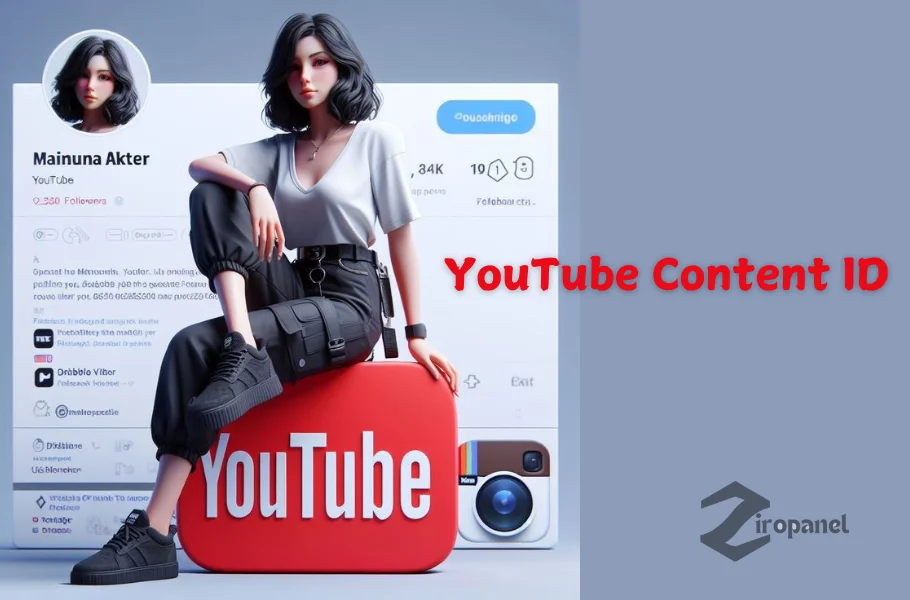YouTube Content ID is a unique system developed by YouTube and its parent company, Google, to protect the rights of content created by users. This tool minimizes the misuse of others’ content and allows the original content owner to monetize their video when it’s shared by others.
There are, however, many questions surrounding YouTube Content ID, and in this article, we aim to answer these questions.
It might be hard to believe, but this system has been in place since 2007, and Google has invested millions of dollars into it.
How Does YouTube Content ID Work?
YouTube’s Content ID system works by scanning videos and matching them with its database to check the copyright status of the videos. When the system detects a match between the uploaded content and content that is copyrighted, it notifies the content owner that there is content similar to theirs.
If you upload content that contains copyrighted material, the content owner can take the following actions:
- Block your content.
- Monetize your content by placing ads on it.
- View analytics and data related to your video.
Additionally, the content owner can adjust these actions based on geographic location. This means that your video might be shown in certain countries and not in others.
READ MORE : 61 Easy YouTube Video Ideas to get More Views in 2025
Who Can Use YouTube Content ID?
To use the Content ID tool, your content must meet specific criteria. Content owners must provide clear rights to prove ownership of the content. Once verified, the Content ID system automatically searches for your content in YouTube’s database.
Due to the strict requirements that YouTube enforces for eligibility, you will need to collaborate with a YouTube partner company to access this tool. Currently, YouTube does not grant individual content creators access to Content ID.
On MasterTube, you can apply to get Content ID and solve your channel’s copyright issues permanently.
What Content Cannot Receive Content ID?
If you plan to get Content ID for your content, keep in mind that according to YouTube’s guidelines, certain types of content are not eligible for Content ID. Some examples include:
- Remixes and mashup music
- Video games and trailers
- Music without a license
- Recordings of live performances
What is a Content ID Claim?
If the content you upload contains copyrighted material, you will receive a Content ID claim, and YouTube will notify you via email.
This system activates automatically when your video matches another video that contains copyrighted content.
If you receive a Content ID claim, simply go to YouTube Studio and check the Content section for your videos. If your video has received a claim, the word “Copyright claim” will appear under Restrictions, and you can click “SEE DETAILS” for more information.
What Should You Do if You Receive a Content ID Claim?
First, stay calm as there might not be much you need to do. Content ID claims usually do not cause major issues for your channel. The content owner might choose to share in the revenue generated from your video or simply track it. If you receive a Content ID claim, you can take the following actions:
- If you agree with the copyright claim, you can choose to do nothing.
- If you are in the monetization phase, you can share the revenue generated from the content that has received a Content ID claim with the content owner.
- You can edit the part of the video that has received the claim. For example, if the claim is related to a piece of music used in your video, you can remove the music.
- If you believe the claim is unjustified, you can dispute it and claim that the content belongs to you. If you are unable to prove this, you will receive a copyright strike, which may result in the video being removed.
Potential Risks of a YouTube Content ID Claim
Since the content owner has legal superiority over you when a YouTube Content ID claim is issued, it’s important to take this warning seriously.
The content owner can either cancel the claim or decide to have your video removed. The issue becomes critical if the content owner removes your video, as this will result in a YouTube Content ID Copyright strike.
When you receive your first YouTube Content ID Copyright strike, you should thoroughly understand the reason behind it. If you receive three strikes, your channel’s monetization will be impacted, your account and all associated channels will be suspended, and your videos will be deleted.
It’s essential to be extremely cautious with YouTube Content ID Copyright strikes.
READ MORE: How to Get More Views on YouTube in 2025
Summary of YouTube Content ID
There is a famous quote by Oscar Wilde:
“Imitation is the sincerest form of flattery.”
However, this does not apply when it comes to YouTube Content ID and copyright.
If you are a content creator on YouTube, you probably know how painful it can be when others “publish your content.”
This is why YouTube Content ID was introduced, allowing content creators to track and control their content.
The best way to create content without copyright issues is to produce your own content and use royalty-free music. Creating your own content is much easier than taking someone else’s content and modifying it for re-upload.
Choose creativity over imitation, and you’ll be sure to succeed.
